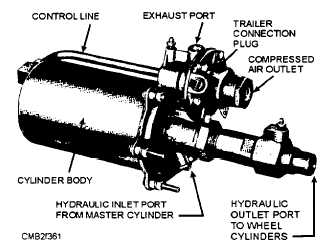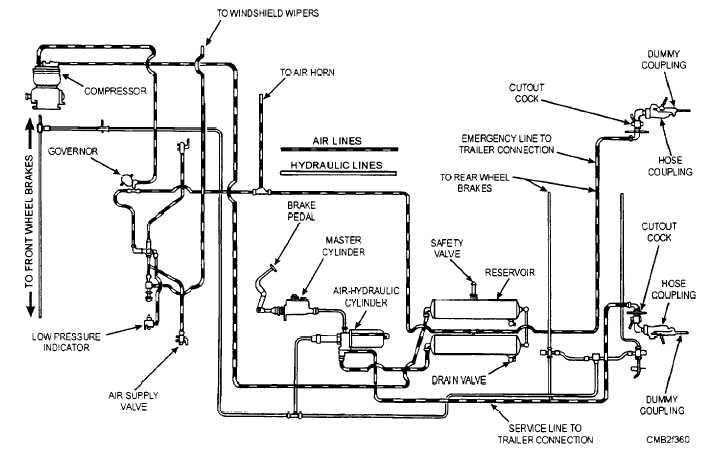The air-over-hydraulic brake system is shown in figure 7-59. This system combines the use of compressed air and hydraulic pressure for brake application. Air pressure is supplied by a compressor and stored in reservoirs as with the air brake system. The master cylinder, wheel cylinders, and brake construction are very similar to that used in a hydraulic brake system. The essential difference between the straight hydraulic brake system and the air-over- hydraulic system lies in the AIR-HYDRAULIC- POWER CYLINDER.
AIR-HYDRAULIC-POWER CYLINDER (AIR PAK)
The air-hydraulic-power cylinder (fig. 7-60) is a self-contained power brake unit. The three essential components of the air-hydraulic-power cylinder are as follows:
The COMPRESSED AIR CYLINDER consists of a large diameter air piston operating within a cylinder body. This piston actuates a pushrod, which is attached to the hydraulic piston within the slave cylinder.

Figure 7-60. - Air-hydraulic power cylinder assembly (Air-Pak).
Movement of the piston in the compressed air cylinder is controlled by the amount of air, under pressure, that is allowed to enter through the control valve. The compressed air cylinder body is attached to the end plate on which the slave cylinder and control valve is

Figure 7-59. - Air-over-hydraulic brake system.
Continue Reading